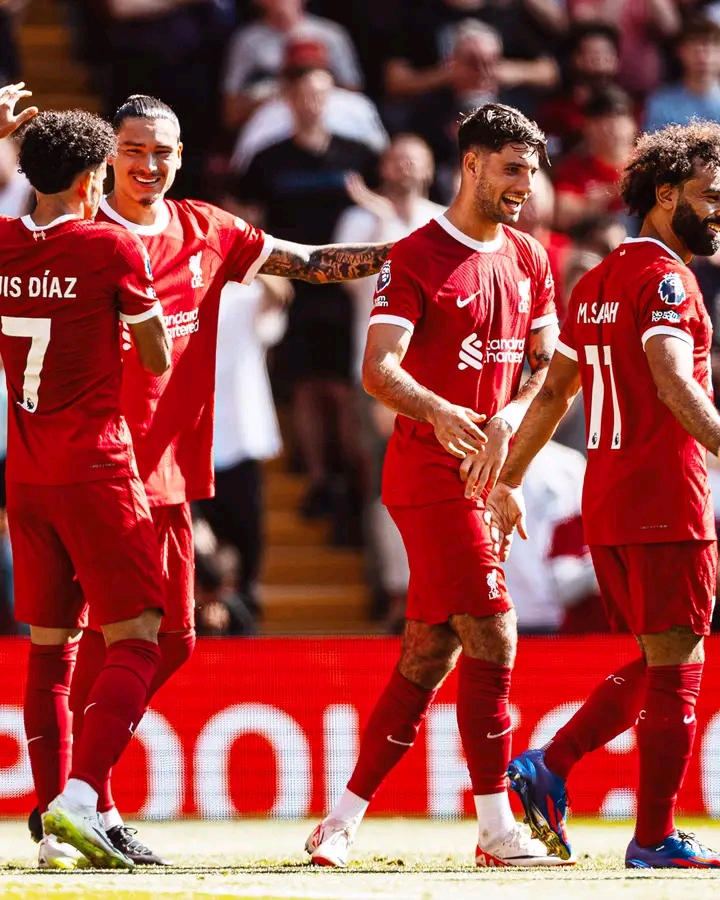One of the big benefits of developing football data is a better understanding of how teams play and how attacking moves work. At the very least, this information allows us to show how our opinions work, which, as anyone who remembers math class knows, can be very important.
First we scored goals, then assists. Shot matters, luck matters, and the idea of pre-assist (the pass before the pass) came into play. Before we knew it, we were drowning in chains of ball possession, setups xG and all kinds of mathematically modeled data. Examining this wealth of information about Liverpool’s 3-0 win over Aston Villa unequivocally confirmed what the eye exam suggested, that Trent Alexander-Arnold was heavily involved.
It is perhaps no exaggeration to say that he is a football graduate. Alright, that’s probably far-fetched. A routine home win against a surprisingly weak Villa side is not the same as winning the World Cup. But Alexander-Arnold has won major club trophies before and he is now achieving a feat that is sure to be rare. Against Aston Villa, the Liverpool captain fired two shots, both from distance and both off target.
The five chances he created were much more remarkable. In just seven Premier League appearances, Alexander-Arnold has provided more and, interestingly, all five came in the first half against Villa. Unfortunately, there’s no easy way to check this, but a quintet of important passes in 45 minutes doesn’t happen very often.
We must also recognize the diversity of ways in which he created opportunities. Liverpool’s number 66 started the match by assisting Dominik Szoboszlai on the first goal of the match and his stint with the Reds from a corner, before Joël Matip had a clear chance from a free kick later in the half.
There was also a pass into the penalty area for Darwin Núñez, as well as some superb long-range passes that allowed Luis Díaz and Mohamed Salah to try and score. Bob Paisley once said: “It’s not a question of long or short ball, but the right ball”, and Alexander-Arnold has proved the managerial legend right by using every skill in his arsenal.
If that wasn’t enough, and it would be for most players, another fantastic long pass from the right back allowed Salah to create a clear chance for Núñez which, although unconverted, led directly to Matty Cash’s own goal. As the 38 minutes ticked away, Alexander-Arnold was involved in every move that produced a shot, and no further back than the penultimate pass. At that point, Núñez hit the frame of the target for the second time, with Trent’s contribution being small and four passes leading up to the shot.
His fingerprints are still in the data, just slightly lighter, and so was the Reds’ first shot after the break, with Alexander-Arnold’s contribution to the series only minimal.
Don’t worry, he then made another fine pass to Salah, leading to another clear chance for Núñez before winning the corner kick that resulted in the third goal. All that remained was for Alexander-Arnold to carry the ball from his own half to the edge of the Villa area and unleash a shot in the 69th minute before an injury curtailed his afternoon shortly afterwards.
He left the field having contributed to all of Liverpool’s thirteen shots that took place while he was part of the XI, usually in significant fashion. It’s worth wondering if Jurgen Klopp’s recent tactical change – with Alexander-Arnold and Matip swapping places in possession – was to blame.
The somewhat confusing tactics of Aston Villa, who Liverpool fans will remember all too well from their own side from last season, may have been the deciding factor. The combination of a high defensive line and little to no forward pressure is welcome for opposing teams.
But the path to success is shown and you can walk it again and again. Alexander-Arnold has hurt Villa in every way imaginable so hopefully his absence with a hamstring injury will be short-lived. Maybe he can go on to complete football against Wolves.

